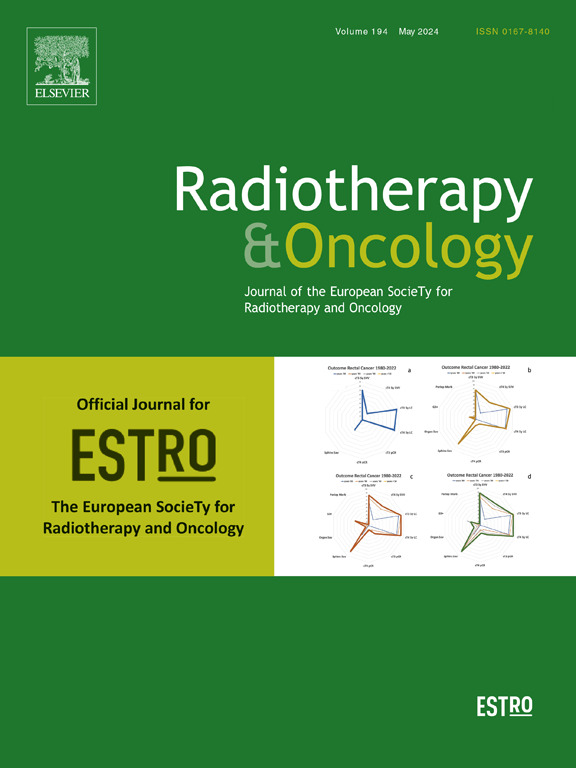乳腺癌放射治疗的剂量限制。重要综述。
IF 5.3
1区 医学
Q1 ONCOLOGY
引用次数: 0
摘要
放射治疗在乳腺癌(BC)的治疗中发挥着至关重要的作用。治疗技术和放射生物学知识的最新进展对患有局部疾病的乳腺癌患者产生了重大影响,因为大多数患者现在都能长期存活。在过去的三十年中,调强放射治疗(IMRT)、容积调强弧形治疗(VMAT)和深吸气憋气(DIBH)技术,加上越来越多地采用适度低分次和超低分次治疗计划,以及为明确定义的患者亚群提供乳腺部分放疗的可能性,大大改变了对乳腺癌患者的放疗。由于剂量-容积限制(DVC)必须适应这些新的治疗模式,我们回顾了有关主要危险器官(OAR)剂量限制的现有循证数据,这些数据适用于全乳/胸壁放疗、包括区域结节照射(RNI)在内的全乳/胸壁放疗和乳腺部分照射(PBI),以及最近推出的最相关的分次治疗计划。这篇叙述性综述提供了一个全面的总结,可能有助于协调治疗计划策略。本文章由计算机程序翻译,如有差异,请以英文原文为准。
Dose constraints in breast cancer radiotherapy. A critical review
Radiotherapy plays an essential role in the treatment of breast cancer (BC). Recent advances in treatment technology and radiobiological knowledge have a major impact in BC patients with locoregional disease as the majority are now long-term survivors.
Over the last three decades, intensity-modulated radiotherapy (IMRT), volumetric-modulated arc therapy (VMAT) and deep inspiration breath-hold (DIBH) techniques, together with the increasing adoption of moderately hypofractionated and ultra-hypofractionated treatment schedules as well as the possibility to offer partial breast radiotherapy to a well-defined patient subset have significantly changed radiotherapy for BC patients.
As dose-volume constraints (DVCs) have to be adapted to these new treatment paradigms we have reviewed available evidence-based data concerning dose-constraints for the main organs at risk (OARs) that apply to the treatment of whole breast/chest wall radiotherapy, whole breast/chest wall radiotherapy including regional nodal irradiation (RNI) and partial breast irradiation (PBI), for the most relevant fractionation schedules that have been introduced recently. This narrative review provides a comprehensive summary that may help to harmonize treatment planning strategies.
求助全文
通过发布文献求助,成功后即可免费获取论文全文。
去求助
来源期刊

Radiotherapy and Oncology
医学-核医学
CiteScore
10.30
自引率
10.50%
发文量
2445
审稿时长
45 days
期刊介绍:
Radiotherapy and Oncology publishes papers describing original research as well as review articles. It covers areas of interest relating to radiation oncology. This includes: clinical radiotherapy, combined modality treatment, translational studies, epidemiological outcomes, imaging, dosimetry, and radiation therapy planning, experimental work in radiobiology, chemobiology, hyperthermia and tumour biology, as well as data science in radiation oncology and physics aspects relevant to oncology.Papers on more general aspects of interest to the radiation oncologist including chemotherapy, surgery and immunology are also published.
 求助内容:
求助内容: 应助结果提醒方式:
应助结果提醒方式:


